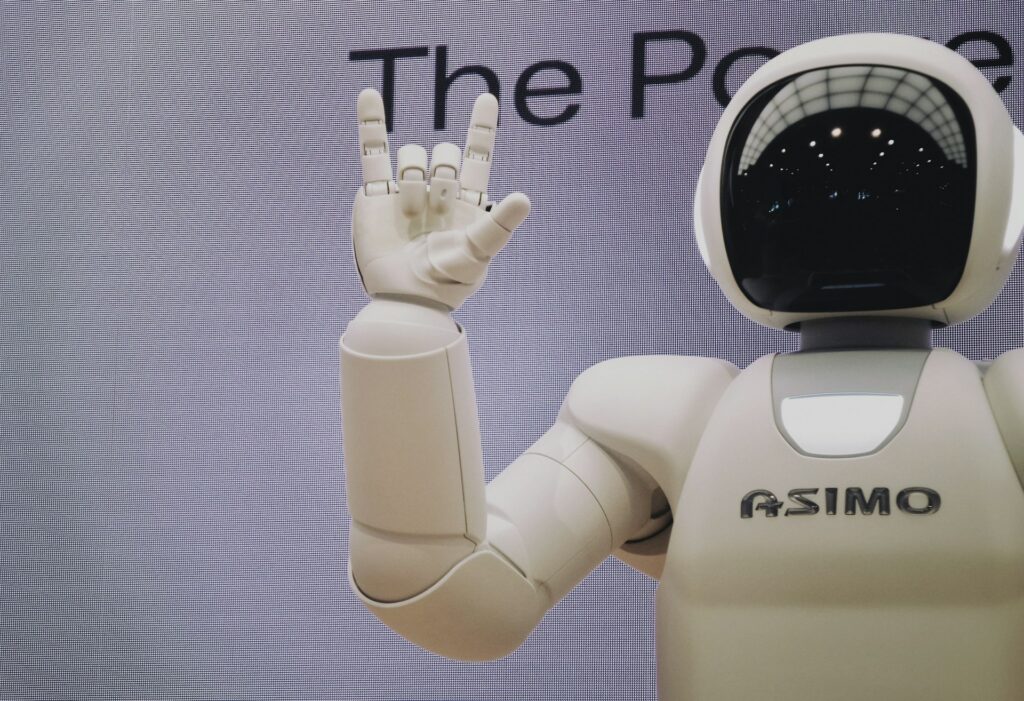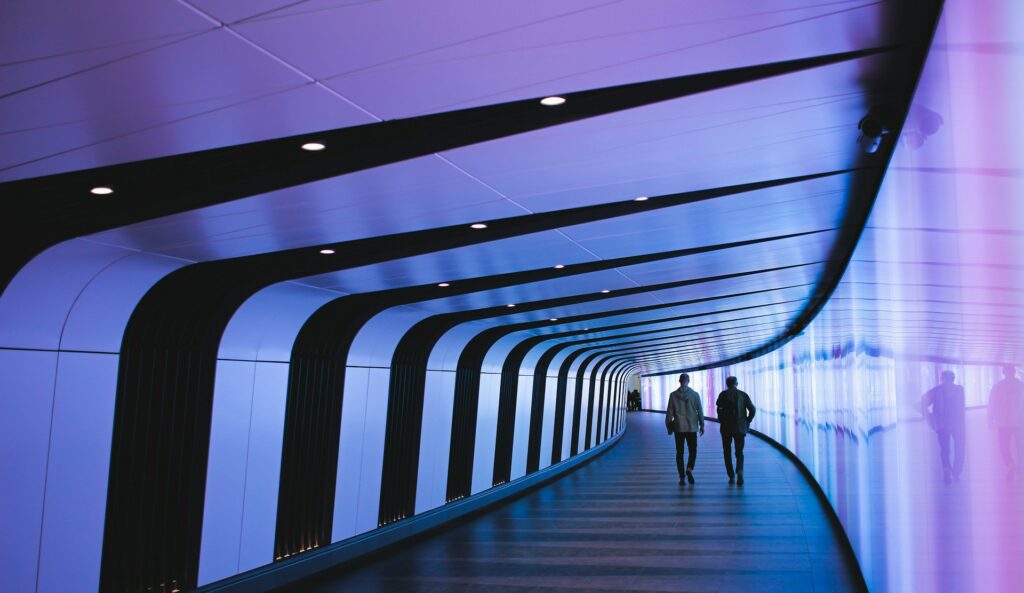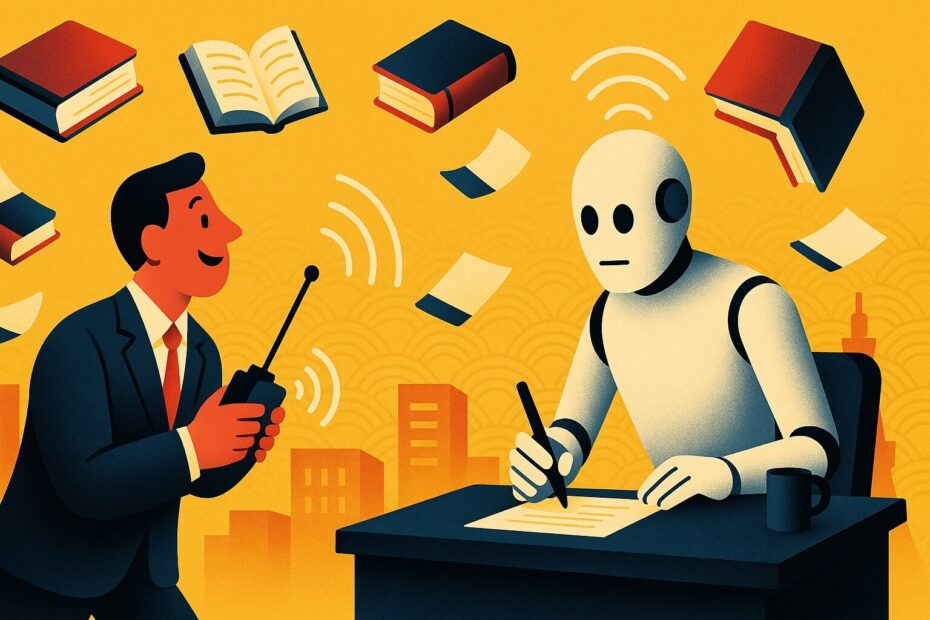The translation industry has witnessed a revolutionary transformation over the past few decades, driven by advancements in technology.
From the early days of rudimentary machine translation systems to the sophisticated neural networks of today, the landscape of Japanese translation has been dramatically changed. At the forefront of this evolution is, undoubtedly, artificial intelligence (AI), which has introduced unprecedented speed and efficiency to the translation process.
But is AI translation in Japanese overtaking human accuracy?
Introduction: the evolution of Japanese translation technology

In particular, the translation of Japanese, a language known for its complexity and nuance, has benefited greatly from these technological advancements. While highly accurate and contextually aware, traditional manual translation is often time-consuming and expensive. In contrast, AI-powered translation offers a faster, more cost-effective alternative, which is capable of handling large volumes of text in a fraction of the time.
However, this raises a critical question: can AI translation in Japanese truly match or even surpass the accuracy and subtlety of human translators?
As AI continues to evolve and improve, it is essential to examine how well it performs in translating Japanese and whether it can be considered a reliable substitute for manual translation. This article explores the capabilities of AI translation, comparing it to human expertise, and delves into the potential future of translation technology.
Understanding AI translation

First, let’s understand how AI translation works.
AI translation leverages advanced technologies, primarily machine learning and natural language processing (NLP), to convert text from one language to another. These systems, often called neural machine translation (NMT), are designed to understand and replicate the complexities of human language.
At the core of AI translation lies the algorithms that learn from vast amounts of bilingual text data. These algorithms identify patterns and correlations between words and phrases in different languages. This learning process is similar to how humans learn a language, through exposure to examples and context.
The process begins with tokenization, where the text is broken down into smaller units such as words or phrases. These tokens are then processed by the AI model, which has been trained on large datasets to understand the syntax, grammar, and semantics of both the source and target languages.
One of the key components of AI translation is the use of deep learning models, particularly neural networks. These models consist of layers of interconnected nodes that mimic the structure of the human brain. They process the input data, learning from it in multiple stages to produce an accurate translation.
Another important aspect is the use of attention mechanisms, which allow the AI to focus on relevant parts of the source text while translating. This helps in preserving context and ensuring that the translation captures the intended meaning.
Despite these advancements, AI translation still faces challenges. Idiomatic expressions, cultural nuances, and context-specific meanings can be complex for AI to interpret accurately.
Human Japanese translation: still the gold standard?

For decades, human translation has been the gold standard in the industry, renowned for its accuracy, contextual understanding, and cultural sensitivity. Human translators bring an unparalleled depth of knowledge and experience to the table, enabling them to navigate the intricacies of language that often elude even the most advanced AI systems.
And I can personally attest that it’s still the gold standard for Japanese translation.
One of the primary strengths of human translators is their ability to grasp context. Language is not just a series of words strung together, but it’s a complex system of meaning that shifts depending on context. As I described above, AI can learn from vast amounts of data and recognize common patterns, but it’s still far from mastering contextual understanding.
On the other hand, Japanese human translators can interpret idiomatic expressions, cultural references, and subtle nuances that are essential for accurate and meaningful translation. This ability to grasp the bigger picture is crucial to ensuring that the text is not only accurate but also resonates with the target audience (marketing is, at its core, about connecting with customers).
Moreover, human translators are capable of handling the stylistic elements of language. We can preserve the tone, voice, and style of the original text, whether it’s formal, informal, technical, or literary, based on the purpose of the business or activity. This is especially important in fields such as literature, marketing, and legal documentation, where how something is said can be just as important as what is being said.
Also, cultural sensitivity is another area where human translators excel. Language is deeply intertwined with culture, and a translator’s cultural knowledge and awareness can significantly impact the quality of the translation. Human translators are able to navigate cultural nuances, ensuring that the translated text is appropriate and respectful, avoiding potential misunderstandings or offenses.
It’s not rare for me to see clients relying on AI translation for business communication and end up with inappropriate or rude expressions that would easily ruin any business opportunities. I do understand that turning to AI is an appealing choice, but you need to at least keep an eye on the quality of the output. To access the quality, it takes professionalism and experience.
However, human translation is not without its drawbacks. It is often time-consuming and can be costly, particularly for large volumes of text or specialized fields that require expert knowledge. The time and effort required to produce high-quality translations can lead to delays, which may not be ideal in fast-paced environments.
Despite these challenges, human translation is the benchmark for other methods. AI struggles to match human translators. We have a rare mix of context, style, and cultural awareness. As technology advances, we should explore how AI and human translators can complement each other. This may lead to hybrid approaches that use the strengths of both.
In the ongoing debate between AI and human translation, it is clear that human translators bring a level of expertise and nuance that sets them apart. While AI translation is making significant strides, human translation remains the gold standard for achieving the highest quality and most contextually accurate translations.
Accuracy and nuance: comparing AI and human Japanese translators

When it comes to translation, accuracy and nuance are essential. Both AI and human translators aim to achieve these goals, but they do so in fundamentally different ways, each with its own strengths and limitations. Based on my experience with English–Japanese translation and localization, let me dive into a comparison of the two.
1. Accuracy in Japanese translation
AI translation systems, especially those using neural machine translation (NMT), have come a long way in terms of accuracy. They’re trained on huge amounts of data, which helps them spot patterns and produce translations that are often grammatically correct and sometimes even make sense in context. That said, for straightforward, literal translations, AI can perform well, delivering results in a fraction of the time it would take a human translator. In that sense, simple and time-sensitive translation tasks can be (partially) delegated to AI, provided there is careful human oversight.
2. Idiomatic expressions and cultural differences
However, AI still struggles with more complex aspects of the Japanese language. Idiomatic expressions, which don’t translate literally, often result in awkward or nonsensical outputs when processed by AI. For example, a phrase like “raining cats and dogs” might be translated word-for-word, producing a meaningless result in Japanese (which would be unintentionally hilarious).
Sure, AI may eventually learn how to handle specific idioms, so you might see examples where it gets it right. But don’t be too quick to feel reassured, there’s always the risk that AI completely misses the intended nuance or fails to deliver a smooth, natural translation.
Take another example: in English, you might describe something as “very secure and robust, like the Pentagon.” While AI might be able to translate this sentence into Japanese, the reference assumes the reader is familiar with what the Pentagon represents. A human translator, on the other hand, would recognize the need to adapt or replace the reference with something more culturally relevant to convey the same idea effectively.
Japanese human translators can prevent these kinds of slip-ups by applying their deep knowledge of both languages to interpret expressions in a way that preserves the original intent.
3. Nuance and subtlety in Japanese translation
Nuance is where human translators truly shine. Language is rich with subtleties, i.e, tone, style, cultural references, and implied meanings. They are challenging for AI to fully grasp. Human translators can detect and convey these nuances, ensuring that the translation is not only accurate but also resonates with the intended audience.
For instance, a marketing slogan or a piece of literary text often relies on wordplay, cultural context, or emotional appeal. A human translator can adapt the text to maintain its impact and relevance in the target language, while AI might produce a translation that is technically correct but lacks the same depth or emotional resonance.
When it comes to the Japanese language, cultural nuances and subtlety are extremely important. Japanese communication is often indirect and nuanced, requiring the ability to read between the lines.
4. Critical industries (hint: most businesses)
There are countless situations where the differences in accuracy and nuance between AI and human translators can make a huge impact. In fields like medical and legal translation, precision is absolutely critical. I’d even say that most business-related use cases fall into this category as well. While some may argue that AI can be more accurate, I believe that the mindset is quite risky. I’ve supported many businesses and projects that incorporate AI into their localization processes, but in my experience, its accuracy is far from perfect. AI can only perform well under specific conditions and within certain limitations.
Even minor errors in these industries can lead to serious consequences. That’s why human translators, who bring specialized knowledge and a strong attention to detail, are often the preferred choice.
That said, AI translation can be effective for things like technical manuals or routine business documents, where consistency and repetition matter more than nuance. If a translation can afford to sound a bit “robotic,” that’s where AI may be a reasonable option.
No matter the use case, unless the translation is just for personal reference, I highly recommend having a human review the output. The key is to have a proper audit and quality check done by an experienced translator.
When it comes to creative fields such as literature, film, and advertising, nuance becomes even more indispensable. Human translators excel in these areas, producing translations that preserve the original’s style, tone, and emotional impact. By contrast, AI translations in these domains often feel flat or disjointed, missing the subtle elements that make the original text truly compelling.
5. The hybrid localization approach
Given the strengths and limitations of both AI and human translators, I personally like a hybrid approach. In this model, AI handles the initial translation, producing a fast and reasonably accurate draft. Human translators then review and refine the text, adding the necessary nuance and cultural context. This way, we can leverage the speed and efficiency of AI while ensuring the quality and depth that only human translators can deliver.
That said, don’t get me wrong, AI does not do most of the work by default. I see AI more as a translator’s assistant. I have experience training and guiding fellow translators, giving them directions and tips using real texts and projects. Through repetition, they learn to localize with nuance and capture the intended message. I’ve realized this process can apply to an AI assistant as well: I can “teach” the AI, review its output, and provide feedback. This doesn’t happen overnight, but with a continuous feedback loop, an AI translation assistant can learn and grow into a valuable asset.
Conclusion
In the evolving landscape of translation, both AI and human translators offer valuable contributions, each excelling in different areas. While AI translation has made impressive strides in speed and efficiency, delivering accurate results for straightforward tasks, it still grapples with the subtleties and cultural nuances that are integral to high-quality translation. Human translators, with their deep understanding of context, style, and cultural sensitivity, continue to be the gold standard, especially in fields where nuance and precision are crucial.
I also need to stress that using AI for Japanese translation without the knowledge of the target language can hugely deteriorate the potential of your business. It’s crucial that you evaluate the output of AI always. This can be said for any other AI applications. It can be catastrophic if you cannot accurately assess the result.
For complex translations, human translators are unmatched. They understand cultural and contextual subtleties in literary works, marketing materials, and specialized legal or medical documents. I would argue that any serious business should adopt a mindset that critically challenges the reliability of AI. Our ability to convey the intended meaning, tone, and emotional resonance ensures that the translation is not only accurate but also meaningful and impactful. This human touch is essential for capturing the essence of the original text and adapting it to the target audience in a way that AI systems currently cannot achieve.
However, dismissing AI translation altogether would be premature. AI systems offer significant advantages in terms of speed and scalability, as well as the ability to handle large volumes of text efficiently and cost-effectively. They are particularly useful for routine translations or initial drafts, providing a solid foundation that can be further refined by human experts. The integration of AI translation can streamline workflows and reduce turnaround times, making it a valuable tool in the translation process.
The optimal approach lies in combining the strengths of both AI and human translation. By leveraging AI for preliminary translation tasks, organizations can benefit from the efficiency and speed of automated systems. Subsequently, human translators can review and enhance the AI-generated output, ensuring that the final translation captures the required nuance and context. This hybrid model not only accelerates the translation process but also upholds the quality and depth that only human expertise can provide.
In summary, while AI translation technology has made remarkable progress, human translators remain indispensable for their ability to handle the complexities of language and culture. The best results are achieved through a synergistic approach that harnesses the benefits of both AI and human translation, combining efficiency with expert insight to deliver translations that are both accurate and nuanced.
Are you looking for the best way to incorporate Japanese AI translation into your business or project? Feel free to contact us! We’re happy to help.

Founder of Kotoli, an agency specializing in helping international businesses enter and succeed in the Japanese market, from higher-level strategic positioning, business management, and market fit, to more tactical marketing implementations such as ads, SEO, content marketing, and localization.
